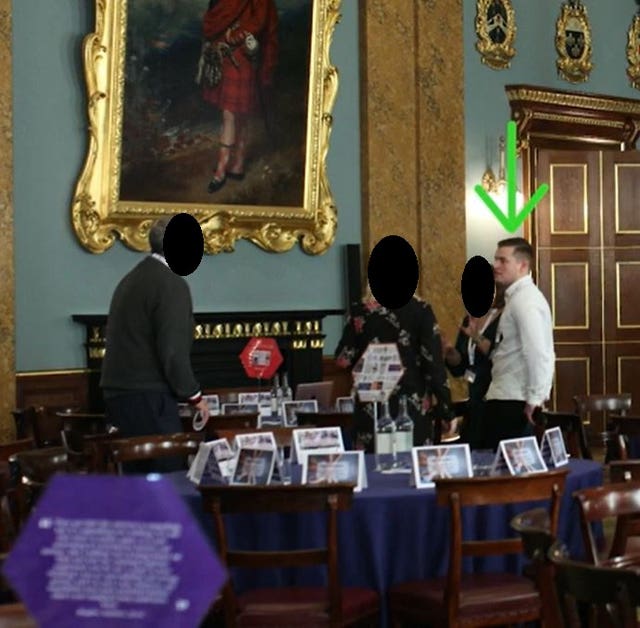Medic describes ‘unprecedented’ decision to enter Fishmongers’ Hall terror attack zone
A doctor has told an inquest of the “unprecedented” decision to enter the scene of the Fishmongers’ Hall terror attack to help casualties despite bomb fears.

Convicted terrorist Usman Khan, from Stafford, fatally stabbed Cambridge University graduates Jack Merritt, 25, and Saskia Jones, 23, at a Learning Together offenders’ education conference on the afternoon of November 29 2019.
Khan, 28, who had travelled to London from his home in Wolverhampton Rad, Stafford, had set upon Mr Merritt in the men’s toilets after strapping two large knives into his hands.

Mr Merritt suffered 12 knife wounds, including a fatal injury to his chest.
Ms Jones was stabbed in the neck in the cloakroom area and staggered on to the stairs, where she collapsed.

Two more women and a porter were also injured but survived.
Khan, who was wearing a fake suicide belt, was pursued on to London Bridge by delegates armed with a narwhal tusk and fire extinguisher, and was then shot dead by police.
Dr Andrew Milne was part of a Helicopter Emergency Medical Service (Hems) team that went to the scene in a fast-response car after being alerted to a woman stabbed in the neck.
On arrival, Dr Milne learned of gunshots and that the suspect potentially had an improvised explosive device (IED).
Inquest coverage:
He told the hearing at the Guildhall that the Fishmongers’ Hall attack was the first time a Hems team had gone into a “warm zone”, confirming it was “unprecedented”.
He told jurors: “There is no specific guidance. No Hems team, as far as I’m aware, had entered a warm zone before this day.”
The court heard that, under Operation Plato, “hot zones” represent the greatest danger and “warm zones” are also dangerous areas adjacent to hot zones.
The witness said: “There was one officer that was instructing us on the number of casualties – five critical, including two in cardiac arrest.
“We were told where it was. He said it was a warm zone but very specifically said it was safe.
“So … we decided to follow the police into Fishmongers’ Hall.”
Jonathan Hough QC, counsel to the coroner, asked: “Was there any discussion about casualties being brought out to you?”
The specialist medic replied that he did not specifically recall that.

On entering the hall, the Hems team did a “walkaround” to assess the casualties.
Dr Milne said: “Given the hazards at that scene, specifically the potential IED on the perpetrator, we felt we needed to get the patients we had a chance of helping out to the casualty clearing point as fast as possible.
“Saskia did not have a chance of recovery, had been in cardiac arrest for too long and, (given) the blood loss and the region where she was stabbed, we did not have a hope of reversing cardiac arrest.”
But he felt there was a “chance” to save Mr Merritt and wanted him to be taken out first.
The Hems team spent four minutes inside the hall before heading to the casualty clearing point.
At around 2.28pm, Dr Milne and his colleague performed a thoracotomy on Mr Merritt, who had been dragged out on a Sked stretcher.
The doctor described the moment he realised Mr Merritt could not be saved.
He told jurors: “I can feel the heart is very empty. At that point I knew the patient had bled to death. Jack had bled to death.”
Mr Merritt was pronounced dead at 2.33pm.
Khan, 28, who was originally from Stoke and was living at flats on Wolverhampton Road, Stafford, before the attack, injured three more people during a five-minute rampage at a Learning Together event before being shot dead by police on London Bridge.
He was released from prison on licence in December 2018, halfway through a 16-year prison sentence, after he was convicted of terror offences in February 2012.





